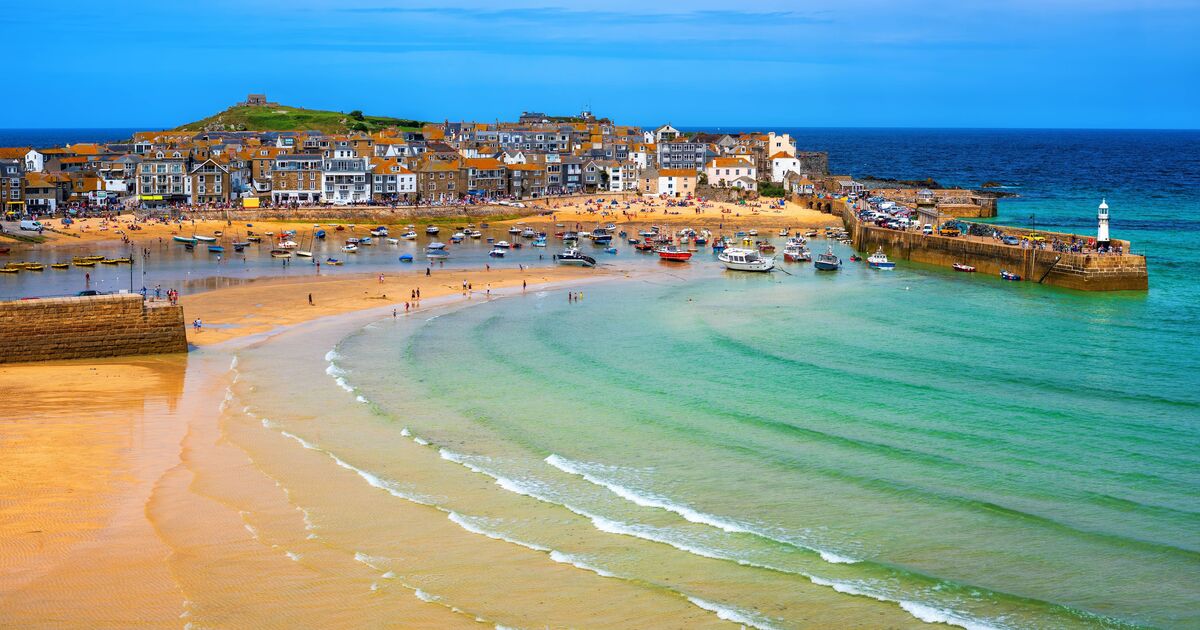St Ives certainly has much to offer, with five sandy beaches and a gently sloping shoreline, it’s a perfect spot for families and sun worshippers.
There’s no shortage of facilities along the beachfront, with lifeguard patrols from Easter until September, deck chairs for hire, and water sports equipment available – including kayaks and stand-up paddle boards. On sunny days, Porthmeor, the town’s “premier” beach, buzzes with activity.
Beyond the beach, you’ll find a delightful labyrinth of narrow streets where pastel-coloured cottages host a variety of restaurants, bars and cafes. Local dining spots serve up traditional Cornish fare, featuring classics like pasties, crab, and mussels.
If you’ve never been, like I hadn’t until last summer, it’s a must-visit. Arriving with high hopes, the bay looked breathtaking from afar (the bustling car park at the top of the town).
The honey-coloured stone buildings in the streets below were inviting, but once I set foot on the beach, reality hit.
Families and groups occupied every bit of sand on a weekday afternoon in July. Even at 4pm, Porthmeor beach was still crowded, including its far side.
With a Cornish pasty in hand, I finally found a spot to sit, only to be met by a horde of aggressive seagulls that had clearly spent the day gorging on litter left on the sand.
The real letdown came when I took a quick dip in the sea.
Having visited Kynance Cove and Pedn Vounder Beach just days before, I was underwhelmed by the slightly murky water that seemed polluted by heavy footfall and frequent boat activity.
I questioned why I was swimming here when Cornwall is home to so many pristine, secluded coves. Later that same evening, as I drove further up the coastline towards Hayle, I discovered one of them.
Gwithian Towans Beach is located at the far end of St Ives Bay and boasts a wide, spacious sandy beach that is popular for surfing and rarely crowded.
It’s merely a 20-minute drive through country lanes to reach this incredible beach, which is backed by massive dunes perfect for a long stroll.
When the tide recedes, the nearby Godrevy Point merges seamlessly with Gwithian, creating a vast expanse of beach. At high tide, it transforms into a distinct cove, framed by cliffs and the National Trust-owned headland.
Nestled at the far end of St Ives Bay, Godrevy Beach is a neighbouring treasure, famed for its iconic lighthouse and a small colony of seals.
The water here is noticeably clearer, likely due to its exposure to Atlantic swells that disperse sediments. A swim here is invigorating and less daunting than in St Ives itself.
On the beach, you can find a private spot behind dramatic rocks — even on a bustling afternoon. However, the true marvel of this western location is the sunset views.
Parking is available at the top of the headland in a National Trust car park, from where it’s a short walk down to Gwithian beach for a quick dip. This is arguably more convenient for visitors than parking at the top of St Ives and navigating the steep path down to the shoreline there.
Facilities are somewhat sparse, with a small cafe and surf shop at Gwithian and a National Trust cafe at Godrevy. Limited toilet and shower facilities are available in the Gwithian parking areas.

